CHARLIE’S ANGELS (2000)
Three female detectives with a mysterious boss retrieve stolen voice-ID software, using martial arts, tech skills, and sex appeal.
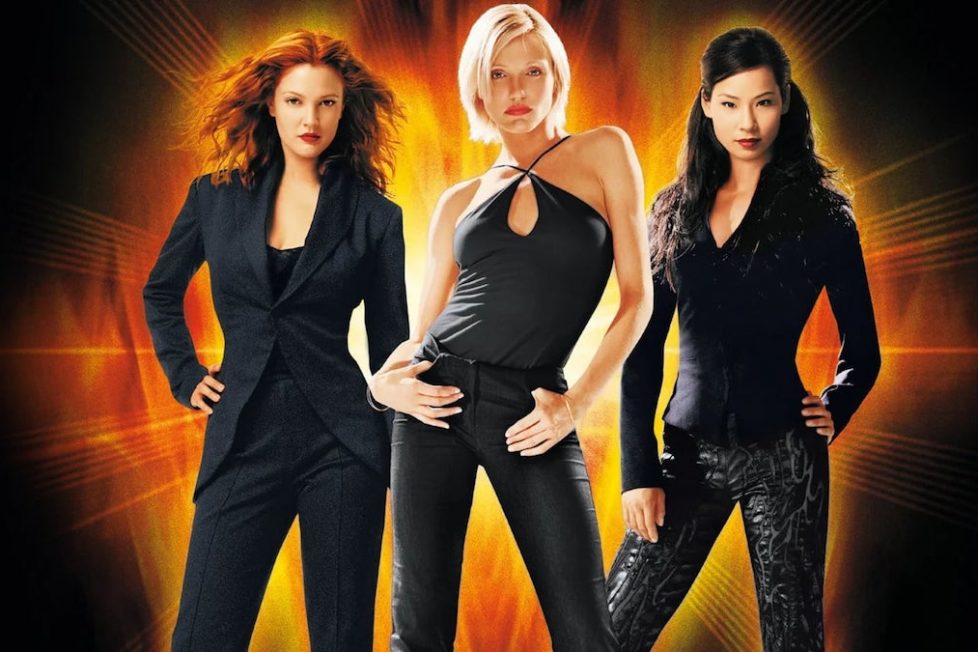
Three female detectives with a mysterious boss retrieve stolen voice-ID software, using martial arts, tech skills, and sex appeal.


Made for $93M, Charlie’s Angels earned more than $264M at the global box office. It became the 12th highest-grossing film of 2000, beating the likes of Erin Brockovich and Chicken Run, and signalled to Hollywood that female-led action-comedy movies could make money. Lucy Liu’s casting alongside Cameron Diaz and Drew Barrymore was also a trailblazing step for Asian-American representation.
But for all it’s ‘independent women’ messaging, Charlie’s Angels has a male gaze. These gorgeous girls dance in Spider-Man underwear, lick steering wheels, wear blonde wigs, and wiggle around in tight leather pencil skirts. As powerful and skilful as the three females are, director McG’s priority was ensuring they looked good. Why should a woman sacrifice her sexuality just to save some lives?
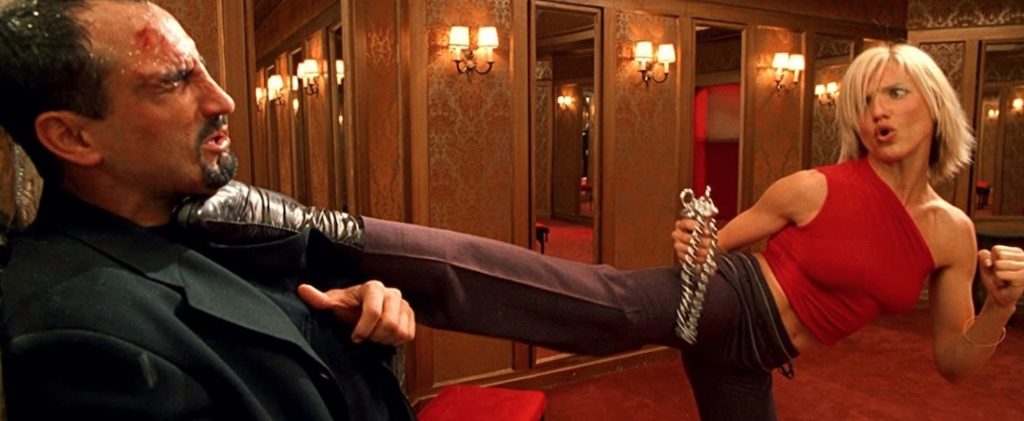
The film clips star-and-producer Barrymore brought to Columbia Pictures, to entice them into making Charlie’s Angels, were taken from Enter the Dragon (1973), Foul Play (1978), and Used Cars (1980). While those influences are weaved throughout the movie, the game-changer was the hiring of McG. Barrymore handpicked the music video director and it’s clear his film debut turned a kick-ass action flick into a comedic music promo.
One can’t be judged for not remembering much about the plot. The Angels (Barrymore, Liu, Diaz) are sent to take down an eccentric tech millionaire called Eric Knox (Sam Rockwell) and battle his henchmen, ‘Thin Man’ (Crispin Glover) and Vivian Wood (Kelly Lynch). The story jumps all over the place as the three ladies go through hundreds of outfit changes with their assistant Bosley (Bill Murray) whispering advice in their ears.
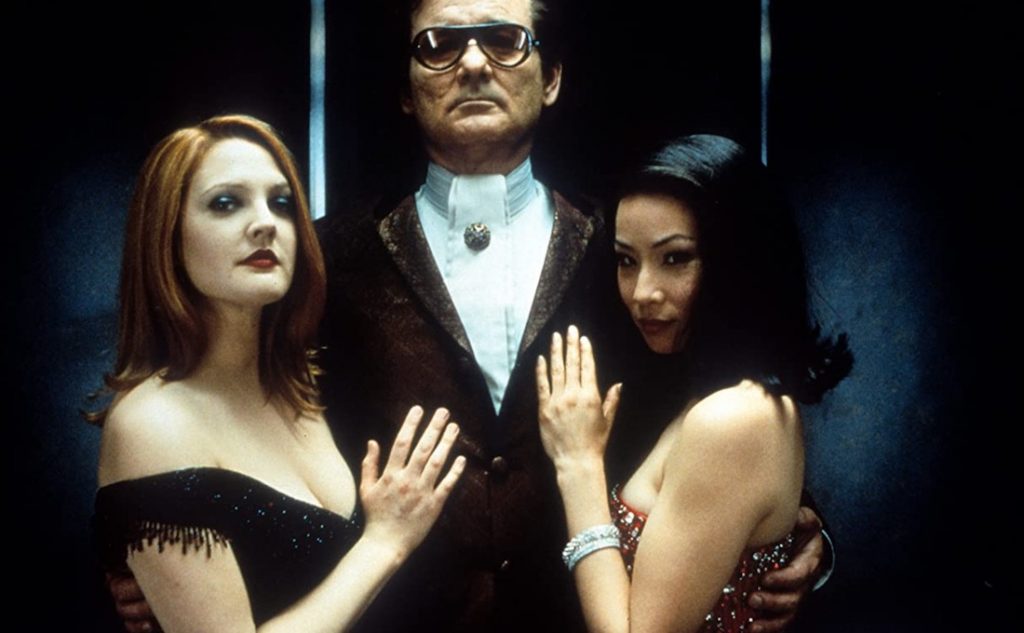
Despite all the jiggling and bikinis, Charlie’s Angels passes the Bechdel test with flying colours. These beautiful women are confident in their sexuality, in their kills, and unashamedly joyful about kicking the crap out of bad guys. Whilst there are some B-plot love stories (starring Tom Green, Luke Wilson, and Matt LeBlanc), these women are in no way reliant on other men, their relationships, or sex. Murray may have infamously clashed with McG and Liu on-set, but it’s clear the three leads had a blast making this film. They’re still good friends to this day.
Cameron Diaz’s Natalie is the blonde bimbo who’s smarter than she looks, playing her like Goldie Hawn with a similar mega-watt smile. Drew Barrymore’s Dylan is edgier and rougher, being more of a Joan Jett type who’s softer than her crunchy exterior suggests. And Lucy Liu’s Alex is stern and serious, being glue that binds them together. The Angels, despite all having movie star good looks and hair that’s never ruined by jumping out of planes, each have characteristics real women could identify with.
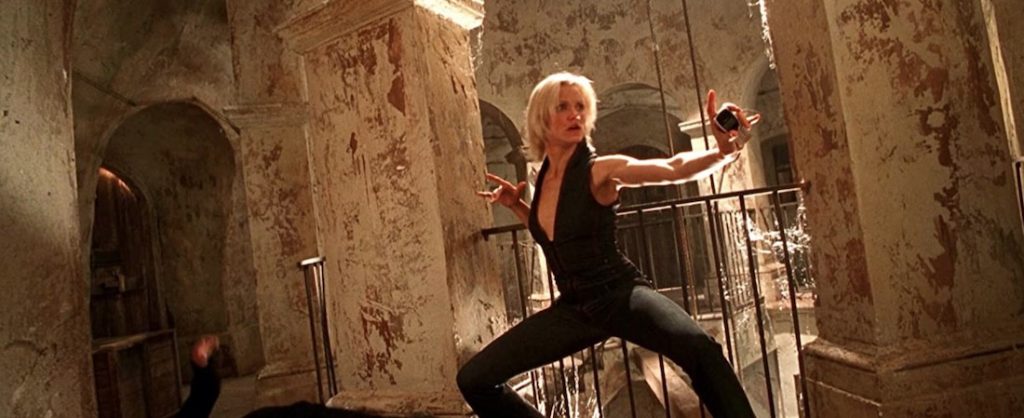
It’s important to remember when Charlie’s Angels came out. 2000 was right in the middle of third-wave feminism, with women encouraged to embrace their sexuality and femininity. Nudity and sex was reclaiming their power, feminism was a dirty word, and being smart wasn’t a trait young Hollywood actress wanted to be identified as. So while all the skin and flirting seem outdated today, at the time it was the height of progress.
Previous action heroines were hard of demeanour and often looked slightly masculine, with shaved heads and muscles. Linda Hamilton’s Sarah Connor and Sigourney Weaver’s Ellen Ripley are seminal movie heroines, but they lacked a femininity the Y2K generation wanted. Despite the male gaze, the women of Charlie’s Angels were more well rounded than many of their contemporaries. They liked dancing in clubs and going on dates, wearing pretty dresses, and having their hair and make-up done… but they also knew martial arts (Barrymore fought to not include guns), spoke multiple languages, and seemed to be able to fly, drive, or sail anything.
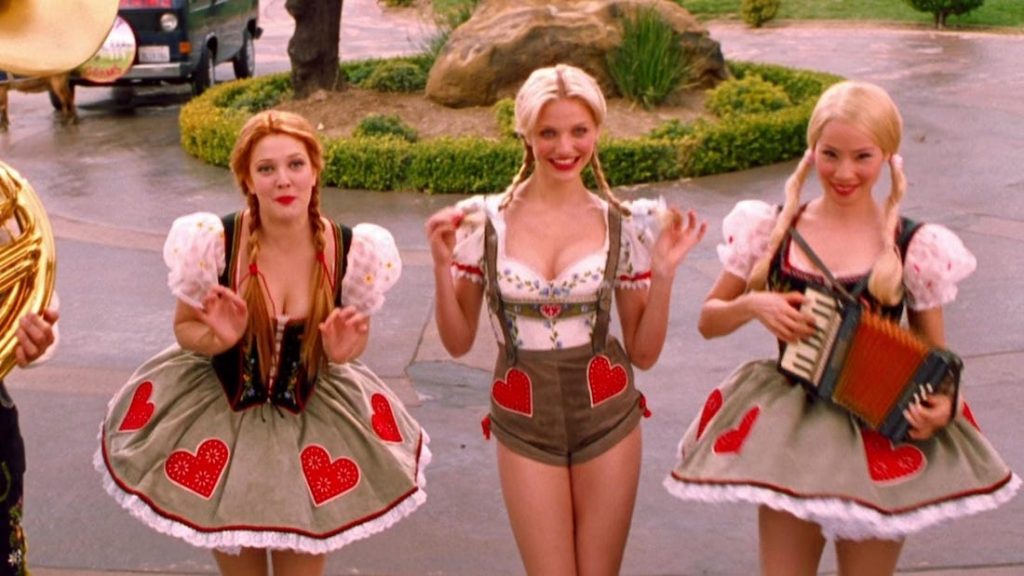
Although the Angels are the central figures, the male antagonists also made a big impact. Crispin Glover’s mute Thin Man originally had dialogue, but once cast he decided he disliked his lines and asked for them to be removed. It was also Glover’s idea to give his villain the creepy trait of stealing locks of hair and sniffing them.
Sam Rockwell plays to the back row as tech genius Eric Knox. With a deep drawl, a permanent lit cigarette, and a collection of high-waist trousers, Rockwell is having a lot of fun. He dances his way through all his scenes, like Tony Manero-meets-Tony Stark-meets-The Joker, which includes a wiggle to Marvin Gaye as he shoots Barrymore through a window and a dance solo to “Simon Says” by Pharoahe Monch in his marine fortress.
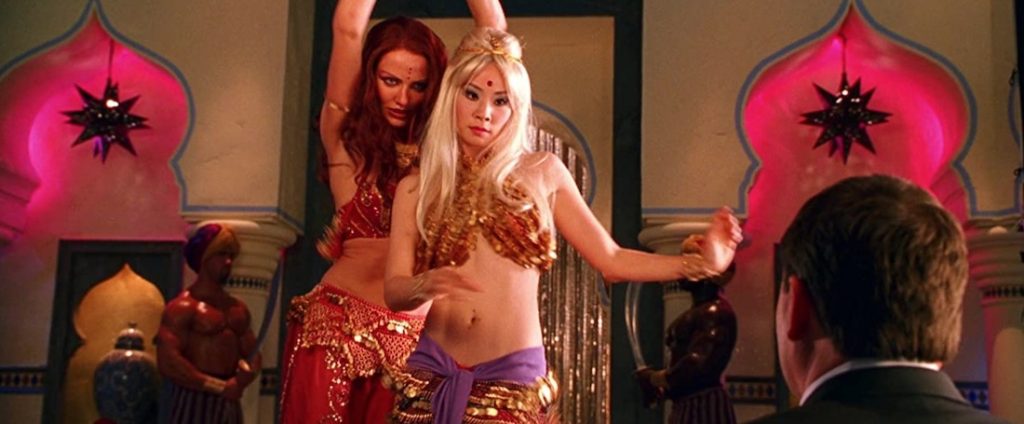
Of course, there are plenty of moments that were problematic even at the time. The cultural appropriation seemed like a bad idea in 2000 and it’s only gotten worse. Barrymore appears in brownface, Diaz and Liu belly dance with bindis, and the girls pose as massage therapists in geisha outfits as “Turning Japanese” plays on the soundtrack! Behind-the-scenes drama still mars this film, as both Nia Long and Thandie Newton called out the thinly veiled racism of the casting because Lucy Liu was paid significantly less than her white co-stars.
Given McG’s MTV background, it’s no surprise Charlie’s Angels feels like a slick big-budget music video, or a shock that music plays such an important role. The soundtrack contained 15 songs and 25 feature in the movie itself. You can’t help but feel whole scenes were strung together purely to use an outfit, hit a punchline, or play a catchy pop song.
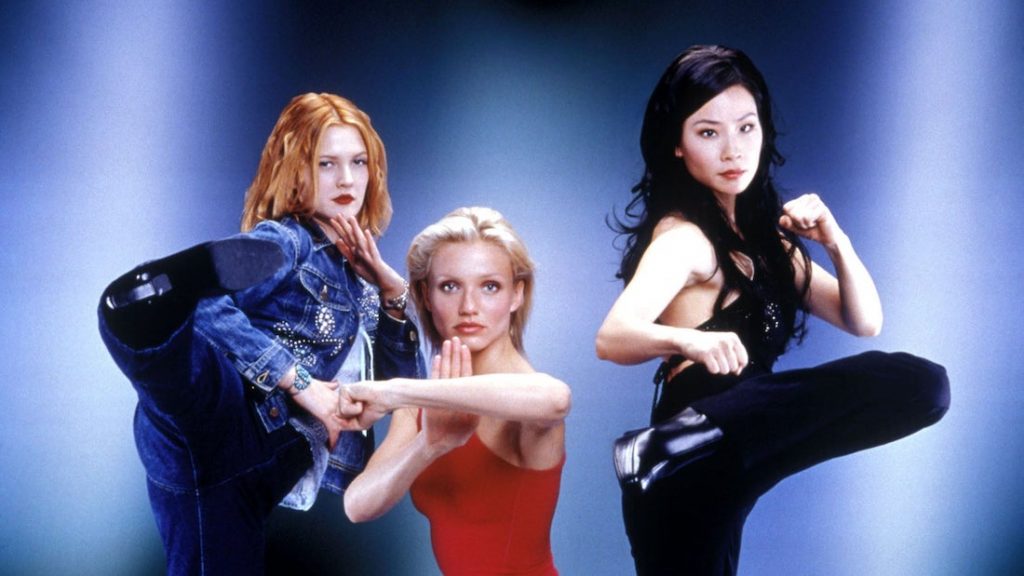
Charlie’s Angels is ridiculous because it mostly makes almost no sense and has a long list of continuity errors… but it’s delightfully fun, doesn’t take itself seriously, and led the way for on-screen female representation. Watching it today will make you nostalgic for a time when blockbusters were more freewheeling and ludicrous. Despite all its flaws, this version has a spark of electricity to it; it’s sexy but not crude, with a sense of anarchy missing from the subsequent TV shows and reboot. (Beside Kristen Stewart, everyone took themselves too seriously in the 2019 version).
It’s easy to see how problematic the film is post-#MeToo, but for many teenagers of the millennium it was a queer awakening and the first time they saw powerful women who weren’t the leading man’s other half. It’s possible to acknowledge the issues and outdated concepts while still enjoying how much fun it is. Compared to Salt (2010) or Atomic Blonde (2017), I know what I prefer to watch on the big screen.
Charlie’s Angels and its sequel, Charlie’s Angels: Full Throttle (2003), helped opened the door to a new era of action films and female stars. In its wake, Angelina Jolie became Lara Croft, Uma Thurman became The Bride, and Charlize Theron helped make Mad Max: Fury Road (2015) an Academy Award contender. It proved women could be funny without being ditsy.
USA • GERMANY | 2000 | 98 MINUTES • 94 MINUTES (CUT) | 2.39:1 | COLOUR | ENGLISH • GERMAN • FINNISH • JAPANESE • CANTONESE

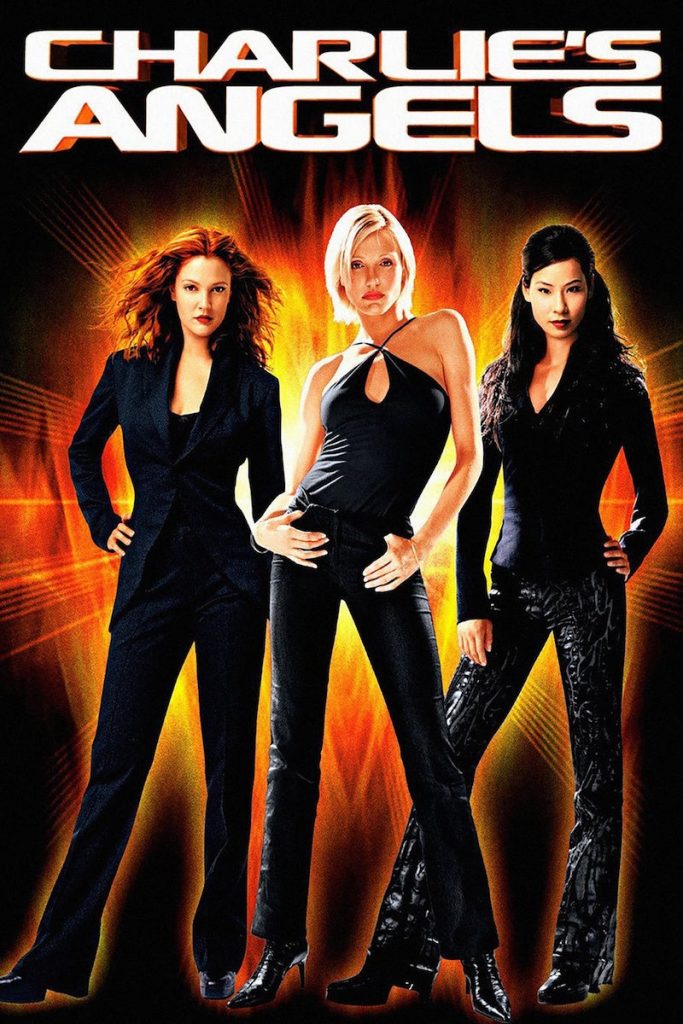
director: McG.
writers: Ryan Rowe, Ed Solomon & John August.
starring: Cameron Diaz, Drew Barrymore, Lucy Liu, Bill Murray, Sam Rockwell, Tim Curry, Kelly Lynch, Crispin Glover, Tom Green, Matt LeBlanc, Luke Wilson, LL Cool J, Sean Whalen & Melissa McCarthy.
